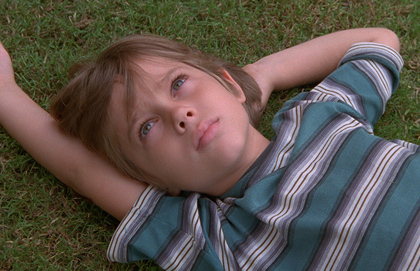It's been over 150 years since Ms. Havisham urged Pip to "Play, boy. Play!" in her Victorian parlour. I find it remarkable that we are still drawing around tables, fanning out swatches of cards and pushing wooden pieces around coloured game boards.
My own extended family plays a peculiar, and for me, nerve-racking card game called What The Heck, the name having been changed from something more profane to avoid bruising the tender sensibilities of my Baptist in-laws. The game requires the kind of ferocious concentration I usually reserve for directing live broadcasts. However tense it gets, I can't deny there is always a unique connection as children, teenagers, parents and grandparents cohere around the gaming table, a connection that just doesn't happen in other contexts. The paradox is that whether we play Hearts or Scrabble or Monopoly, games with friends and family are as fraught with competition as they are camaraderie.
This exploration into the tension between contest and connection animates the unusual collection of 15 essays in Your Move - What Board Games Teach Us About Life, co-written by Canadian journalist, Jonathan Kay and long-time gamer, Joan Moriarity.
As a parent, my antennae are always tuned for evidence of a backlash to the pocket screens our eyeballs are tethered to. I recall Kay saying to me over coffee a year ago that the phenomenal global success of Harry Potter is in large part due to our attraction to the pre-modern, pre-electronic world. Kay's co-writer, Moriarity writes in a chapter titled "Welcome to the Magic Circle" that "perhaps it was inevitable that people would welcome the chance to turn away from their screens, seeking the warmth and connection you get from playing games together with live human family and friends."
Your Move posits that we have entered a surprising golden era of "tabletop-games" – from the nostalgic battered rec room boxes of our childhoods to the risqué Cards Against Humanity, to the artistically designed Settlers of Catan (which turns out to be a literal game-changer), and esoteric war and role playing games based on historic battles. Kay, who as well as playing family board games with his kids attends international summits to play his favourite game, Advanced Squad Leader, points out that U.S. board game sales jumped 28 per cent between 2016 and 2017. Revenues are expected to rise into the next decade. All of this is despite each of us carrying "a miniature video arcade around inside our smartphones."
The book describes a counter movement that seems to come straight out of the playbook of Canada's iconic media theorist, Marshall 'the medium is the message' McLuhan. Paolo Granata, who teaches Book and Media Studies at St. Michael's College, University of Toronto, has designed a board game called The Medium, which applies some of McLuhan's ideas. Granata says that board games are increasingly popular among students as analog antidotes to the over stimulation and isolation of the digital world. He quotes McLuhan's observation: "At work, man specializes. At play, he uses all his faculties."
"There is something about a physical game board that's localized in time and space, that is really very satisfying," Granata says. "A board game is an hic et nunc (here and now) interaction, a finite thinking exercise that can counterbalance the infinite scrolling mind-trick of today’s social media."
"Games, at their best, have the power to create a special space, a world within a world," argues Moriarity, who writes with the real life cred of teaching the rules of dozens of games to customers in Toronto's "Snakes and Lattes", which bills itself as North America's first board game cafe. She muses about the resistance her customers have to trying new games, the pull of old chestnuts like Connect Four and The Game of Life. She rejoices in teaching nervous players new games, made easier by them not having to read the game pamphlet, a stage of gaming that is universally abhorred. (One of the memorable tidbits the book imparts is the startling fact that there is nothing in the official Monopoly rules that says a player landing on the Free Parking square should win a jackpot).
Kay provides an excellent potted history and analysis of the popular board games that have been developed over the past 25 years. (Such is the range of games and topics covered that the book would benefit from an index). Kay leverages his insights as a former engineer to show how stability theory explains the pleasures my family got from Settlers of Catan. Unlike chess or Monopoly, where "one nudge in either direction" can spell "cascading ruin" resulting in a zero-sum game, Settlers of Catan has a piece called the robber whose role is "designed in a way that helps underdogs."
Catan, with its randomized hexagonal game board designed to be switched around and its rustic painted wooden pieces, was a turning point for gamers when it came out in 1995. It was the first of the German-style board games—or Eurogames—to hit main street toy shops.
Kay explains that "the philosophy of play embedded within Catan is rooted in long-term historical trends dating back to World War II." Complex board games like Risk, Axis & Allies and Victory in the Pacific "took the form of simulated warfare...(where) players take on the role of generals moving their units around tabletop maps. For obvious reasons, this was not a model that resonated positively with Germans who grew up in the shadow of the Third Reich."
Instead of destroying things, Kay argues, new games emphasize "building things... communities (Catan), civilizations (Terra Mystica), farms (Agricola)." Whereas old-style games like Monopoly, which Kay wryly terms "that great bonfire of friendship," involve bare-knuckle fighting and a kind of dull plodding towards one or more player's total triumph or total ruin, the new games centre on amassing resources. Everyone is busy with their own projects rather than trying to knock each other out. Another observation Kay makes is that the new games are designed to keep things interesting right to the end when the winner is often a surprise. He identifies the "enormous amount of micro-managerial satisfaction" in collecting wood to build a road in a game like Catan, which leads to more gentle competition and less spite towards competitors. In a typical paragraph combining analysis and whimsy Kay writes, "This way of playing caters to what most people actually want out of game nights, and post-World War II life more generally: to unwind and compete, to remain friends, and to live out one's days in bustling little towns and harbors, as opposed to battle-ravaged hellscapes lorded over by warring generals."
The book identifies a problem that helped me untangle why my own best intentions to play games with my kids has mostly fallen apart. Moriarity calls it the alpha-player problem. When the kids were younger, spanning that magical age of 11, when they have most of their faculties but puberty had not yet hit, we would play endless games of Uno, Chinese checkers, and Payday, Settlers of Catan and chess. Then the oldest began to beat everyone in every game, thus breaking one of the fundamental pre-conditions Moriarity argue is needed for satisfying game playing: everyone has to have a real chance of winning, and make a genuine effort to win without cheating, but no one takes it so seriously that real life relationships are threatened.
"When everyone is invested enough in the game to feel excitement and tension, wondering how it will turn out, but detached enough not to feel like a failure as a human being if they lose, that is the sweet spot where all the best play happens," she says.
Moriarity compares this "conceit of competition" to a dog play-fighting tug of war with an old sock. Various solutions to the alpha-player problem are explored, including introducing everyone to a new game together so they are stumbling along learning at the same time. There is also a sub-genre of games, which require players to cooperate as well as compete: "Players work together to accomplish a common goal, but each has access to information their teammates cannot see, and all are severely restricted in their ability to communicate."
The Christian philosopher of aesthetics, Calvin Seerveld, argued that without the ability to suspend the pragmatic world of work in "tense leisure time," artistic culture cannot flourish. Your Move demonstrates how a spirit of playfulness frees us from the narrow confines of the workaday world and indirectly bestows life lessons that can be applied in the real world. Jonathan Kay explains how his favourite game, Advanced Squad Leader, a complex war reenactment game, "provides players with a path to self-improvement so long as you are alive to the lessons of the game board." He notes moments when he loses focus, becomes cavalier or short on empathy.
"The ASL game board is not just an arena of war. It is an arena of ego, temperament, of human strengths and foibles. Learning important life lessons often can be painful or humiliating. With ASL, it is fun."
Joan Moriarity claims that cooperative games can bolster team spirit in a corporate environment but, more subversively, also demonstrate the inefficiency of office micro-managing.
"Give a boss something to do, and she will tend to give more autonomy to her minions. Likewise, minions who are tired of being told how to tie their shoelaces may rebel against corporate higher ups by hoarding data within their fiefdoms and throttling the flow of information. The boss cannot micromanage a department she cannot fully survey or understand."
Jonathan Kay develops a fascinating argument about the paradox of incidental instruction by exploring his experience of playing a game called Greenland. Kay describes the immersive play, which involves the logistical challenges of the Norse, Thule and Tunit catching whales, killing Norsemen, and invading Vinland as bringing "not just an endorphin rush, but an enduring curiosity about Indigenous history, an effect that persisted well after the game was over." He muses that this game was developed by "just two nerds trying to make a good game," and not through focus groups or ministerial committees working on reconciliation producing an "awareness raising exercise with a few dice thrown in." He argues that "as with falling in love and finding one's purpose in life, (raising awareness) tends to be something that happens when you are not trying to do it."
The authors catalogue the pleasure they get in actively shaping the roles they play and the story arcs they follow in games, a pleasure they argue is more engaged than movie watching or even reading books. The authors claim that this is particularly true in longer, immersive games such as Dungeons and Dragons and Dead of Winter (Moriarity) and ASL and Chinatown (Kay). It's not clear to me how this kind of creative immersion is qualitatively different from what I observe my youngest son enjoying when he plays a cooperative game of Minecraft or Roblox online with his friends. Although these worlds are foreign to me, and the digital graphics make my eyeballs ache, it is clear that my son carves out for himself powerful game identities, and feels he is in large measure driving the action, as well as being part of a larger, ongoing mission. It would have been interesting to read a comparison of digital and analog role playing games.
In perhaps the book's most powerful testimonial, Kay exalts board games over more passive forms of entertainment such as TV: "After experiencing the thrill of midwifing a story right then and there on a tabletop, I refuse to go back to a form of entertainment that requires me to sit back and watch someone else's fully formed story pop out of a box."
Perhaps the secret of the enduring appeal of board games, apart from the sheer fun of playing them, lies in the book's central claim: "That is the world of the tabletop, a place where many of life's great lessons leave their mark – but the sting never lasts longer than the time it takes to put all those little pieces back into their box."
Now there's an exhortation as we move once more towards the season of mistletoe, turkey and family board games. Your Move may even give those most reluctant gamers among us a reason to keep on playing together.





